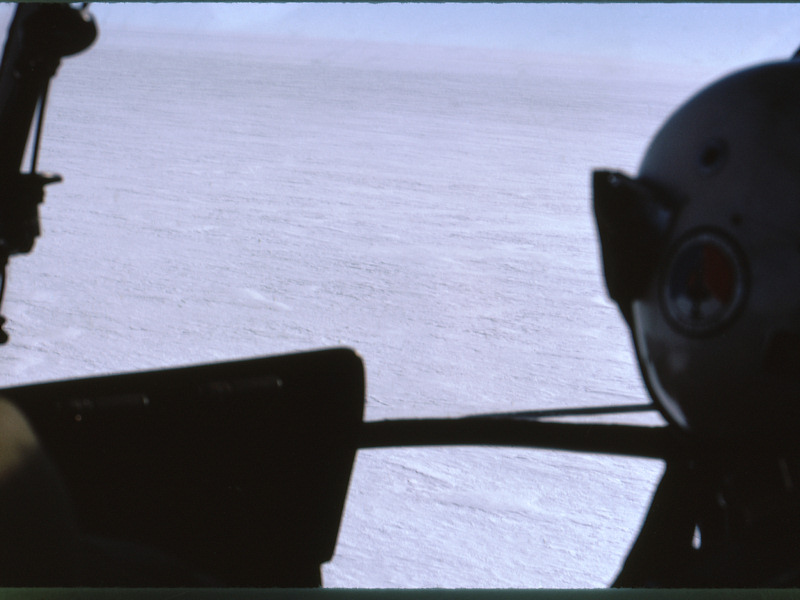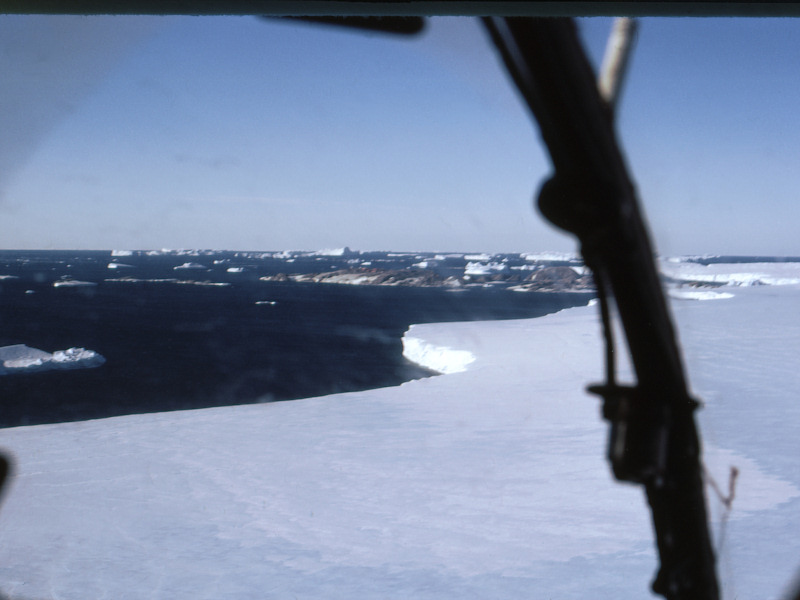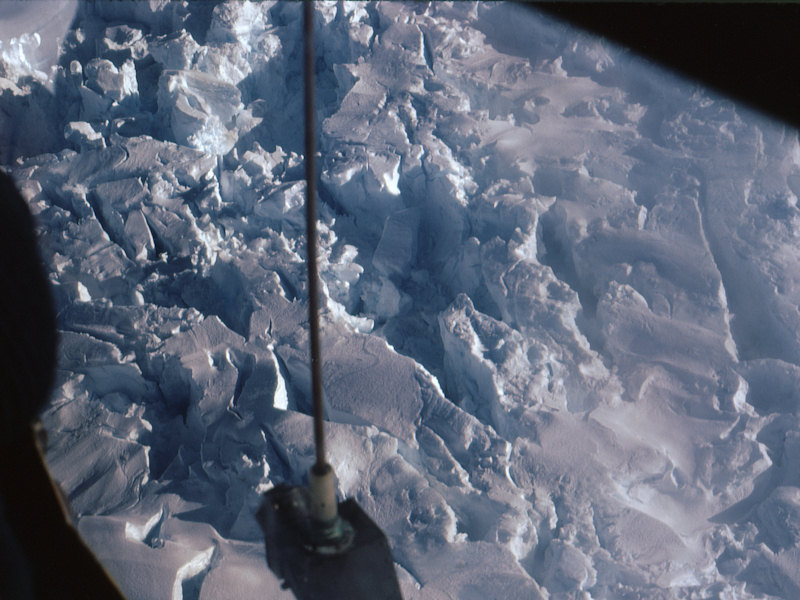
Photo album: "Return of an expedition"
Fly over a photo with the mouse to enlarge it
Click on a photo to open it in a new window
Between two launches of balloon, we are going to visit a group of friends coming back from an expedition on the Antarctic continent. They left four months ago to try and reach the Russian station of Vostok, two thousand kilometres away, while drilling bores along the way to get ice cores for glaciological studies. Unfortunately, failures of the vehicles which had suffered a lot during another expedition the year before and the bad weather conditions that had made difficult the arrival of spare parts to be parachuted by an American aircraft, didn't permitted the full success of the expedition. They had to go back before reaching Vostok.
 |
We are beginning to sight the vehicles of the expedition. |
 |
We are drawing near the vehicles of the expedition. They have stopped forming five parallel lines oriented according to the main winds direction. This permits to limit snow accumulation. |
 |
We can see, here, an element of the travel party, it is made of a tracked vehicle Hotchkiss HB40 "Castor" attached to a caravan mounted on skis and a sledge. |
 |
We are seeing one of the five
tractors HB40. The French Polar Expeditions (EPF) asked Hotchkiss to
develop these vehicles, of a larger capacity than the weasels, according
to their specifications. They had been used for the first time in
Greenland during the EGIG 2 (*) campaign (1967-1968). They have been moved,
then, to Adelie Land. (*) If you know the French language, you can read "l'Histoire des Pôles" on the AMAEPF (Amicale des Missions Australes Et Polaires Françaises) website: Histoire des pôles Les premiers grands programmes scientifiques internationaux. L'expédition glaciologique internationale au Groenland 1967-1968 (EGIG 2) |
 |
We are ready to leave after this short visit. We can see on the background one of the sledges whose content is protected by a plastic cover. |
 |
We are flying back to the base. We can sight, still far away, the archipelago of Pointe Géologie. |
 |
We can see, on the snow, a storage of materials and on background, the tongue of the Astrolabe glacier advancing into the see. |
 |
We are drawing near Pétrel island where is situated Dumont d'Urville base. |
 |
Before flying back to the base, we are flying over the edge of Astrolabe glacier whose surface is scored with deep crevices. |
 |
Another view of the wild surface of the glacier. |
 |
At foreground, we can see the antenna of the Alouette 2 and, below, we are having a bird's eye view on the crevices of the glacier. |
.
.
.
.
.
.
.